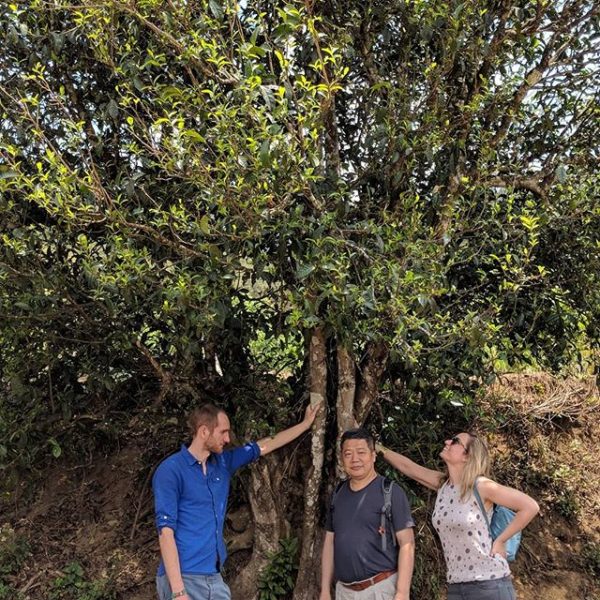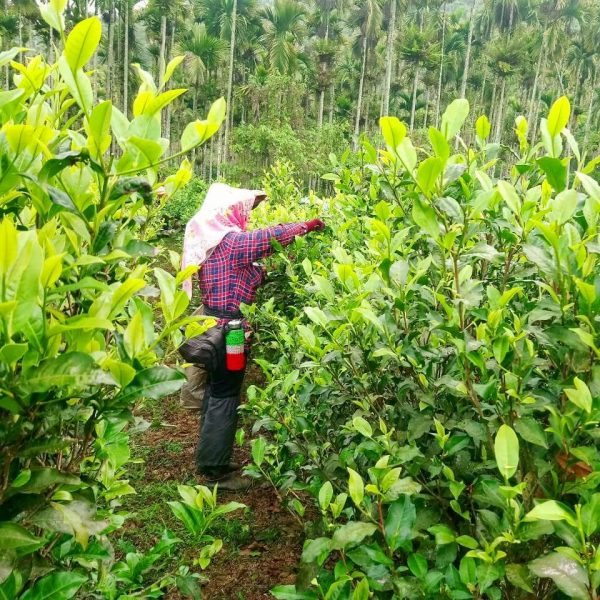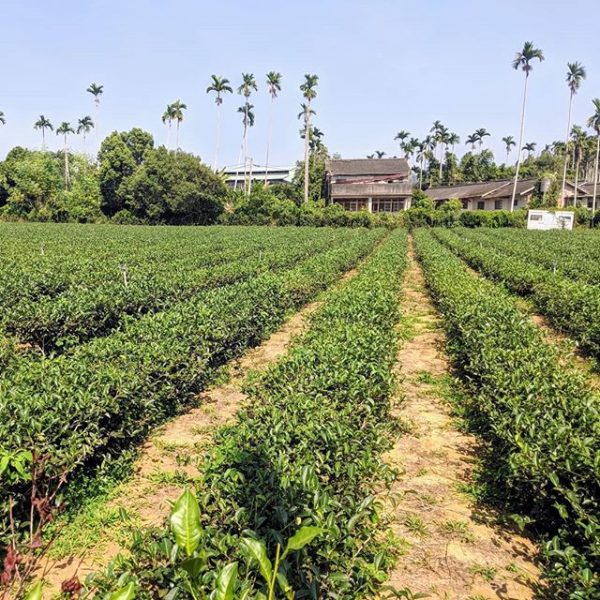From bush to cup
Understanding different tea farming methods
There are many different words in the tea world to describe different forms of tea farming: natural, organic, wild, semi-wild, bio-dynamic or pesticide-free. We wanted to give you more clarity what the terms mean and what kind of tea you are likely to expect.
Why is there no standard? There are two reasons:
- This is mainly because especially Taiwanese and Chinese farmers mainly sell their tea to the local market, maybe exporting to Japan or Korean. The European market is not so interesting for most farmers, as the local demand especially in Taiwan is higher than the actual production. That is why you also have a lot of “fake” Taiwanese tea from Vietnam or other countries… but that is another story for later.
As the European market is not of a special interest there is also rarely a farmer that cares to get EU organic certified. Sometimes you find the bigger farmers or some trading companies that get the certification – in Taiwan it is only a handful. - A lot of small farmers can simply not afford the process of EU organic certificate and they use non standardized ways in producing their tea that doesn’t fit the schema of a standardised certificate.
So let’s have a look at the different definitions that are used in the tea market and what is behind them.
From bush to cup
“Wild tea” or in Chinese “Yesheng cha” 野生茶 often referred to as arbor trees or “Gushu” or native tea

A good example of this category is our “Berlin Flows” puerh tea or our “Formosa Puerh” from Taiwan. This tea comes from wild arbour trees that often are 300-500 years old. The tea plant is native to Yunnan and thus the trees are growing like normal trees and most of the time not just within other trees or close to some villages. In a perfect situation the trees are harvested with great care, like Lao Lin is doing our Puerh contact, and depending on the location or thus their value taking care of. Lao Lin for example is searching for forgotten trees and commissions them from the local farmers. A tree will bring a couple of 100gr of tea in the beginning and when taken care of maybe up to 2kg of finished material. A real art.
From bush to cup
“Wild grown tea” or in Chinese “Yefang cha” 野放茶 - sometimes translated with bio-dynamic or semi-wild tea

This one adopts the concept of a completely wild tea – essentially that tea is a tree and could more or less be left alone. The tea trees are usually planted, sometimes even 30 years ago, sometimes recently. Our Black Jungle Tea or White and Wild are great examples of semi-wild tea.
The tea farmer is not pruning the tea (a common practise to get more growth), using any fertiliser (sometimes organic fertiliser) and no pesticides. The tea is growing together with plants and usually the farmers also do not have any direct neighbours that use pesticides. Actually we think that wild grown tea could be a way forward to also preserve the arbour tea trees that should be protected from a certain age as it is already a kind of cultural heritage. Semi-wild tea is sometimes referred to as “Biodynamic” tea, which is only partly true as Bio-dynamic is a concept that goes beyond farming and has an anthroposophical approach. So far I haven’t met any farmers that adopted this – in Germany the most well known bio-dynamic brand is “demeter.
From bush to cup
“Organic tea” or in Chinese “Youji Cha” 有機茶

There are several local certification bodies similar to the EU certificate the most know one are M.O.A. (Japanese origin) or Tse-Xin Organic (TOAF). Our favourite example of this category is the Red’n’Rolled or Sweet Lullabies – both teas that were also featured in this year “100 Organic Taiwanese Farmers” Exhibition in Natou World Tea Expo. The farmers use no pesticides but organic fertilisers often based on soy or other organic material.
The local organic certification are usually not recognised by EU bodies, this has different reasons, mainly because it there is not so much interest. EU certified tea often comes from large Chinese farmers or other countries like Kenia, Nepal that are more planting tea for European or American markets.
From bush to cup
“Natural tea” or in Chinese “Ziran Cha” 自然茶
This is where things get tricky as there is little definition. It could be anything because natural is a very wide term. It is a good idea to check what is meant.
From bush to cup
“Pesticide free” / “Agro-chemical free” - "Wu du" 無毒茶
Something a lot of tea merchants are picking up and from our point of view a great way to get a baseline in what a tea should be. Usually this is tested locally (like we do with the SGS institute) or in the exports markets (more expensive and often the institutes are less specialised on the most common Chinese or Taiwanese pesticides). We for example test based on the European Standard, which means that the tea sample is tested for 400+ pesticides that are common. Even small residues can be detected and while we rely on other methods for quality as well – like the most important one getting to know the farmer and her/his way and attitude towards making tea – testing for pesticides is the most standardized way.
We have learned it the hard way, that it is important to test every harvest and also to build up close and trusted relationships: We recently had a case, where we were very sure that the farm is perfect. Unfortunately on import it came out that the tea had pesticides contamination and we couldn’t use any of the tea. When we confronted the farmer, it turned out that
he had sold the farm, didn’t tell us and then just got some tea from somewhere else. These things can happen and luckily no tea was sold, but they showed us again how important our approach of a continuous relationship is. Being on the “ground” with farmers regularly, checking in on their approach and learning from them. Also, we will test every harvest before importing the tea. As always, its important to know your source. Hope you learned something.